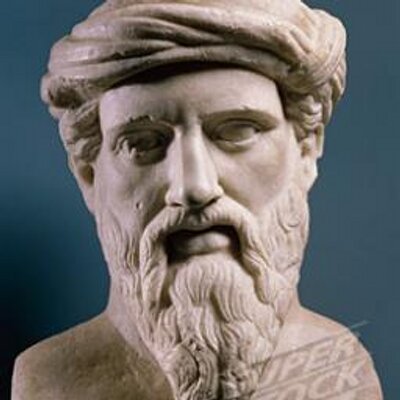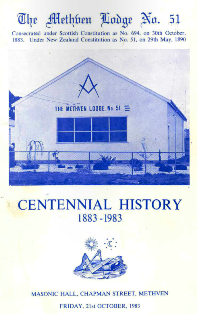How to Square your Square

The 47th Problem of Euclid, also called the 47th Proposition of Euclid, or the Pythagorean Theorem, is represented by what appear to be 3 squares.
To non-Freemasons, the 47th Problem of Euclid may be somewhat mysterious. Most wonder at the significance of this strange looking, 3-box symbol on a piece of Masonic jewellery.
Most Masonic books, simply describe it as “A general love of the Arts and Sciences”. However, to leave its explanation at that would be to omit a subject which is very important, not only of Pythagoras’s Theory, but of the Masonic Square.
What are these 3 Black Boxes and why are they important to Freemasons?

EUCLID (Philosopher) – Died 285 BC
We are told that Euclid, (the Father of Geometry), who lived several hundred years after Pythagoras, worked long and hard to solve the 3:4:5: ratio puzzle. It is said by some that he then sacrificed a hecatomb (a sacrificial offering to God of up to 100 oxen or cattle). However, historically, it is believed that the Egyptians and Babylonians understood the mathematical usefulness of the 3:4:5 ratio long before Euclid.
The math is the key to understanding this symbol’s broader and universal meaning.
The Pythagorean Theorem, also known as the 47th Problem of Euclid or 3:4:5:

PYTHAGORAS (Philosopher) C. 570 – 480 BC
“In any right triangle, the sum of the squares of the two sides is equal to the square of the hypotenuse.” (the hypotenuse of a right triangle…which is the longest “leg”…or the 5 side of the 3:4:5:).
The Right Triangle, below, shows the sides of 3, 4 and 5. The angle created between the 3 (side) and the 4 (side) is the Right angle of the square.
A little later, when we begin to build it, (with sticks and string), you will place your sticks at the 3 corners of this Right triangle.
The square of 3 is 9.
The square of 4 is 16. The sum of 9 and 16 is 25. (25 represents the hypotenuse).
The square root of 25 is 5.
Therefore, the ratio is written: 3:4:5:
When we write down the square of the 1st four numbers (1, 4, 9 and 16), we see that by subtracting each square from the next one, we get 3, 5 and 7.
OK, let’s try it.
1, 4, 9, 16
4-1 =3
9-4 = 5
16-9 = 7
3:5:7: These are the steps in Masonry. They are the steps in the Winding Stair which leads to the Middle Chamber and they are the number of brethren which form the number of Master Masons necessary to open a lodge of:
Master Mason: 3
Fellow Craft: 5
Entered Apprentice: 7
These are the sacred numbers.
The essence of the Pythagorean Theorem (also called the 47th Problem of Euclid) is about the importance of establishing an architecturally true (correct) foundation based on use of the square.
Why is this so important to speculative Masons who only have a symbolic square and not the actual square (the tool) of an operative Mason?
The 47th Problem of Euclid is the mathematical ratio (the knowledge) that allows a Master Mason to:
“Square his square when it gets out of square.”
You’re saying to yourself: “Why is that so important to ME in today’s world unless I’m a carpenter?”
How to Create a Perfect Square using the 47th Problem of Euclid
The knowledge of how to form a perfect square without the slightest possibility of error has been accounted of the highest importance in the art of building from the time of the Harpedonaptae, (and before). Harpedonaptae, literally translated, means “rope stretchers” or “rope fasteners” of ancient Egypt (long before Solomon’s Temple was built).
The Harpedonaptae were architectural specialists who were called in to lay out the foundation lines of buildings. They were highly skilled and relied on astronomy (the stars) as well as mathematical calculations in order to form perfect square angles for each building
Historically, a building’s cornerstone was laid at the northeast corner of the building. Why in the northeast?
The ancient builders first laid out the north and south lines by observation of the stars and the Sun, especially the North Star, (Polaris), which they believed at that time to be fixed in the sky.
Only after laying out a perfect North and South line could they use the square to establish perfect East and West lines for their foundations.
The 47th Problem of Euclid established those true East and West lines, so the rope stretchers could ascertain a perfect 90 degree angle to the North/South line which they had established using the stars.
The Forty-Seventh Problem of Euclid in Today’s World
With this simple geometric 3:4:5 ratio of how to create a 90 degree, Right Angle:
- Man can reach out into space and measure the distance of the stars in light years!
- He can survey land, mark off boundaries and construct every single thing on Earth.
- He can build homes, churches and buildings, and with the knowledge of this simple ratio he can begin digging on opposite sides of a mountain and dig a straight tunnel through the centre of it that meets exactly at the centre!
- He can navigate the oceans, guiding the mariners and aviators, and be able to locate himself in the middle of the water (with no end in sight), and is also able to calculate how far he has come and how much farther he must go!
The 47th Problem of Euclid, also known as the 47th Proposition of Euclid or the Pythagorean Theorem, teaches each of us to not only be general lovers of the arts and sciences, but to stand in awe of the God-given knowledge with which you can take a piece of string and 4 sticks and be able to find your way home from anywhere on Earth, on the Sea or in the Heavens.
The 47th Problem of Euclid represents such a perfect symbol of Freemasonry, encompassing both art and science, the simple knowledge of it demands a breath-taking awe of the perfection, the universality and the infinite wisdom of that which has been given to us by the Grand Geometrician of the Universe.
It all begins by simply learning how to Square your Square.
One last thing.
This is why the old antique, wooden carpenter squares which you have seen or have heard about have one longer leg. Their “legs” were created using the “3” and “4” part of the 3:4:5 ratio (the 5 is the hypotenuse) using the 47th Problem of Euclid. Equal length “legs” on modern day (carpenter) squares are relatively “new” technology.
+++++++++++++++++++++++++++++++++++++++++++++++++++



